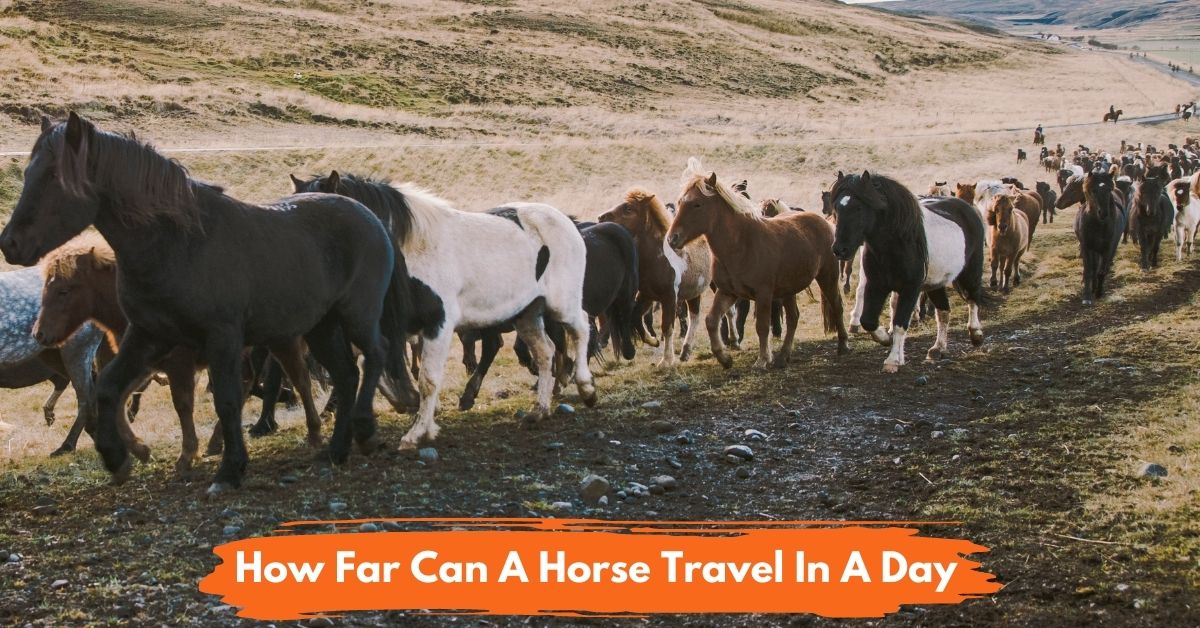
How far can an average horse travel within a day? As long as your horse walks or trots, you can ride your horse from 25 to 35 miles (40 to 56.5 kilometers) without resting.
A trail horse is best for traveling long distances. Trail horses in good shape can withstand long journeys from 50 to 100 miles (80.5 to 161 kilometers) in a day.
Other breeds that can travel long distances include the Saddlebred and Icelandic horse . These horses have a natural, smooth gait that is easy on the rider and horse alike.
If you plan to ride your horse long distances, it’s important to have the right information. You might not know if your horse is going to hold up or if you’re going to run into any unforeseen problems.
This article will go over essential topics that need discussion about the topic.
How Far (Miles) Can a Horse Travel in One Day?
Horses are strong and capable animals that can travel long distances, but the exact distance they can travel in one day depends on a variety of factors, including the horse’s age, breed, physical condition, and the terrain it is traveling on.
In general, a healthy adult horse in good physical condition can travel between 20 and 40 miles (32 and 64 kilometers) in a single day. This distance can vary depending on the type of terrain the horse is traveling on, as well as the weather conditions. For example, a horse may be able to travel farther on flat terrain in cool weather than it could on hilly or rough terrain in hot or humid conditions.
Age and physical condition can also affect a horse’s travel distance. Younger, healthier horses may be able to travel longer distances than older or less fit horses.
It is important to take these factors into consideration when planning a long journey and to provide the necessary rest and care for the horse along the way. This includes providing the horse with plenty of water, food, and rest breaks to ensure that it stays hydrated, nourished, and comfortable throughout the journey.
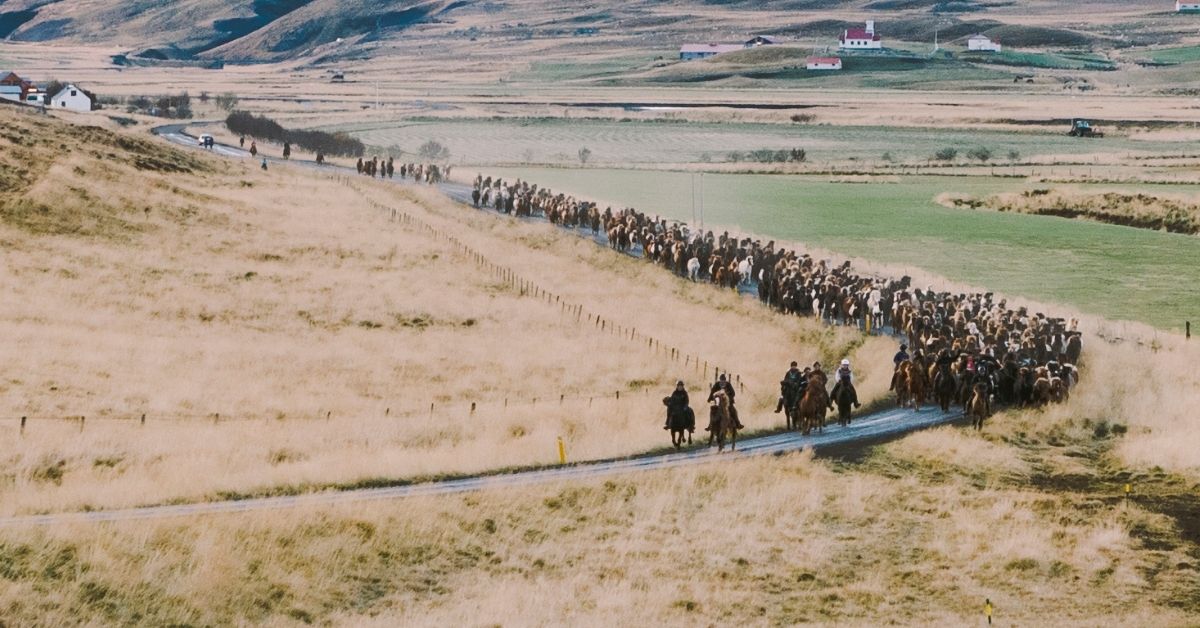
What Factors Affect How Far a Horse Can Run?
There are tons of factors that can affect how far a horse can run in a day. Here are some factors that can impact on your horse’s performance during a day-long trip:
Picking the Pace
How fast you go will play a big role in how long your horse can keep going. If you want to travel further, it’s best to go slower so your horse can last longer.
While the pace might be slower, it doesn’t mean that the journey will take any longer. In fact, going at a moderate pace might get you there faster since your horse won’t get as tired.
When it comes to pacing, you start by gaining a bit of momentum. Find a comfortable pace to cruise at, and finally, ease up on the gas a bit as you’re getting close to your destination.
Generally, a lateral two-beat gait like the jog or trot is best for long-distance travel.
You can include canters and gallops to make the travel efficient. But make sure not to go too crazy with the galloping since it can tire out your horse.
| Horse Gait | Average Speed(MPH) | Average Speed(KM/H) |
|---|---|---|
| Walk | 4.3 mph | 7 km/h |
| Trot | 8.1 mph | 13 km/h |
| Canter | 10 to 17 mph | 16 – 27 km/h |
| Gallop | 25 to 30 mph | 40 – 48 km/h |
Traveling on Different Terrains
Another factor that plays a role in how far your horse can travel is the type of terrain you’re on. The surface your horse walks on makes a world of difference.
For example, going uphill is obviously harder on your horse than going downhill. That’s because going uphill puts more muscle strain, which can quickly lead to fatigue.
The same goes for different types of surfaces. For example, if you’re traveling on soft and muddy trails, your horse will have to work harder than on a packed trail.
The mud and soft ground can make it difficult to balance and move forward. This is especially troublesome if your horse is carrying more load.
The type of terrain can also affect the pace of your travel. If the terrain is more difficult, you might have to slow down to make it easier on your horse.
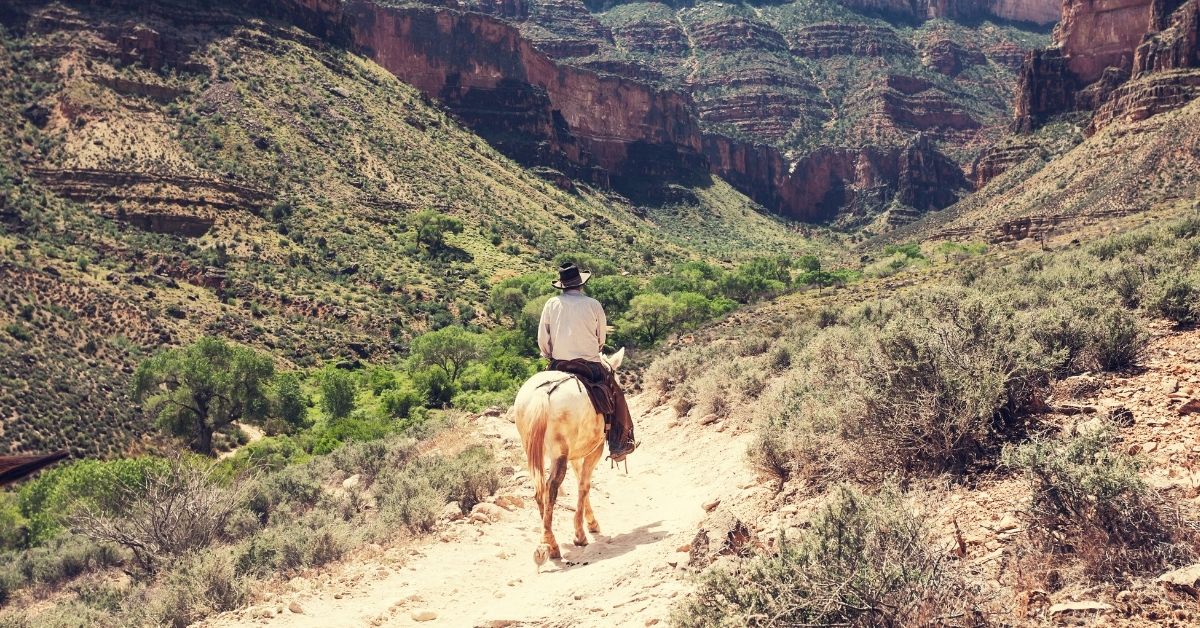
Weather Conditions
The weather can also play a role in how far your horse can travel. If it’s scorching hot outside, your horse will get tired much faster. That’s because they’ll work harder to stay cool and lose more water through sweating.
If it’s cold out, your horse might have a harder time getting warmed up. As a result, your horse will need to spend more energy to maintain its body temperature.
Be aware of potential weather conditions that might make travel more difficult. For example, high winds or heavy rain can make travel challenging (and even dangerous).
If the weather is bad, it’s best to wait it out or find shelter. Avoid pushing forward and risk getting stranded or lost.
Horse’s Health and Fitness
If you’re going to ride your horse all day long, make sure they’re in good health and condition for the journey. A horse that’s not used to being ridden for long periods will get tired much faster than a horse that’s used to it.
That’s why it’s important to increase the amount of time you spend riding each day. But, if you try to do too much too soon, you might end up overworking your horse. As a result, you could end up with an injured or sick animal.
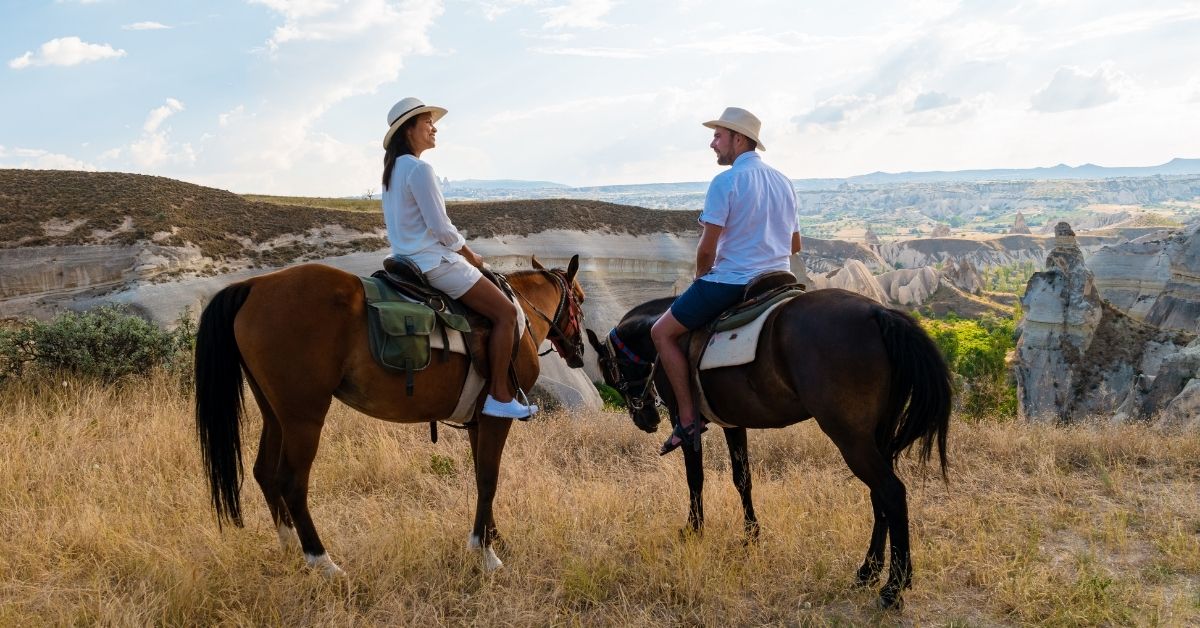
Proper Equipment for the Horse
There’s also the matter of having the right equipment for your horse. If you’re carrying a lot of gear, you might need to get a pack-saddle or panniers to help distribute the weight. Otherwise, your horse could end up with sore muscles or back problems.
Ensure that your saddle fits properly and isn’t causing any discomfort for your horse. For example, an ill-fitting saddle can rub and chafe the skin, which can be painful and lead to saddle sores.
It’s also important to have the right footwear for your horse. If you’re riding on rough terrain, you might need hoof boots to protect your feet. Otherwise, they could end up with painful cracks or chips in their hooves.
Conditioning for a Riding Discipline
If you’re planning on doing a lot of long-distance riding, it’s important to ensure that you and your horse are ready for it.
Spend some time conditioning your horse to ensure it can handle the demands of long-distance or prolonged riding. This can include working on their endurance by doing things like trail riding or trailering.
You should also ensure that you’re in good shape before you embark on a long journey. After all, you’re going to be spending a lot of time in the saddle, so you need to be able to handle it. That means being physically fit and having a good level of endurance.
Feed and Water
Finally, make sure you have an ample supply of food and water for your horse. If you’re going to be riding all day, you must ensure that your horse has enough to eat and drink.
You should bring along hay or grain and water buckets and regularly stop to let your horse rest. You can also consider stopping by natural food and water sources to let your horse drink and cool off. It’s a great option to travel as lightly as possible.
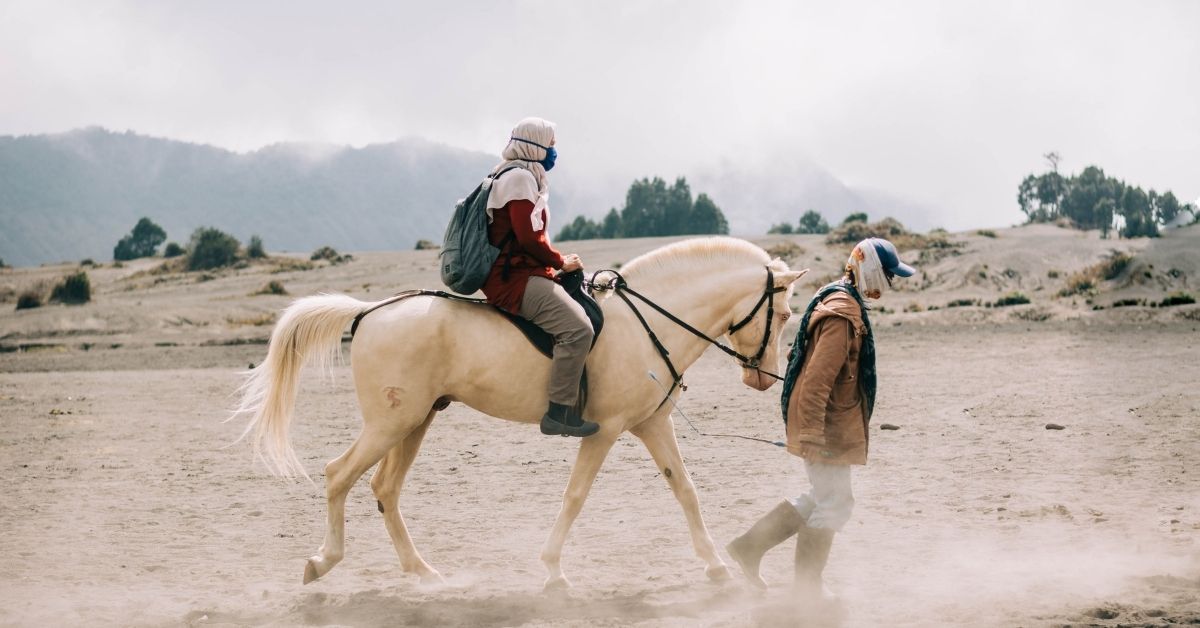
Best Endurance Horse Breeds
Different horse breeds specialize in different things. Some are better at sprinting, while others have more endurance. If you’re looking for a horse that can fulfill the latter, I’ve listed the top four best breeds for the job:
Arabian Horse
When it comes to endurance, the Arabian horse is king. These horses are known for their stamina and have been used in long-distance travel for centuries. They’re also relatively small, which makes them easier to transport when needed.
Arabian horses are also known for their intelligence, which can be helpful when spending long hours in the saddle. They’re also relatively easy to train, which is another bonus.
Mustang Horse
Mustang horses are more than just beauty — they’re also incredibly hardy. These horses are also known for their endurance and ability to survive in harsh conditions.
Mustang horses were originally bred in the American West and have been used by cowboys and ranchers for centuries. They’re also one of the most popular horse breeds for long-distance riders.
Morgan Horse
The Morgan horse is another solid choice for endurance riding. These horses are known for their versatility, strength, and stamina.
They were originally bred in Vermont and used for various tasks, including farming, logging, and even racing. Today, they’re still used for various disciplines and make great all-around horses.
The versatility of the Morgan horse means that it can be used for various riding styles. If you’re looking for a horse that can do it all—including one that can travel long distances—then the Morgan horse is a great option.
Anglo-Arabian Horse
Any breed that mixes with the Arabian will be a good choice for endurance riding. After all, the Arabian horse is known for dominating the endurance racing sport.
However, I’d like to put the Anglo-Arabian in its own category. These horses are a mix of Arabian and Thoroughbred horses, which makes for a perfect combination of speed and stamina.
The Anglo-Arabian Horses have the physical features of a Thoroughbred. At the same time, it will also have the elegance and high endurance of the Arabian.
With both genes, the Anglo-Arabian horse benefits in both facets.
Frequently Asked Questions
Got some more things in mind? I get it—traveling with a horse can be daunting. So, to help put your mind at ease, I’ve answered some frequently asked questions about long-distance riding below.
How Far Can a Horse-Drawn Carriage Travel in One Day?
According to research, a horse-drawn wagon or carriage can travel between 10 to 30 miles (16 to 48 kilometers) daily. However, this will depend on the terrain, the load’s weight, and the horse’s condition.
If you want to ensure your horse-drawn carriage lasts the entire period, it’s important to take breaks and let the horse rest. You should also have enough nourishment to keep your horse going despite the circumstances.
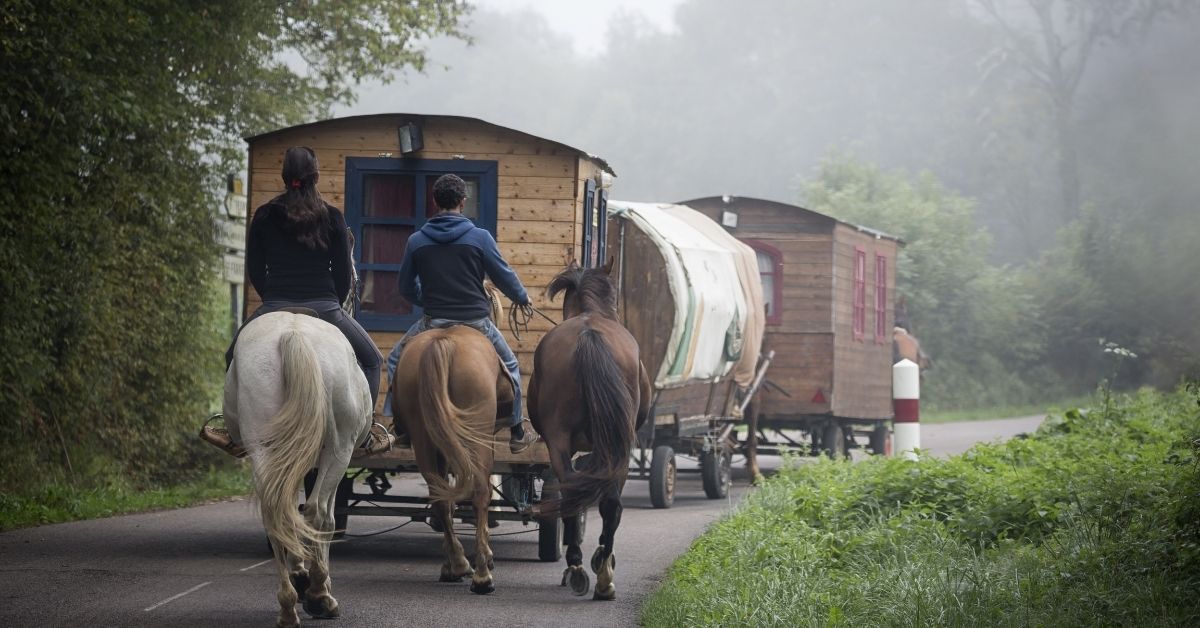
How Far Can Horses Travel in One Day with a Rider?
Horses tend to run efficiently on their own for longer distances and periods. On average, a horse can travel up to 50-plus miles in one day.
However, the distance will be significantly less when you factor in a rider. Generally, a horse can only travel 25 to 35 miles (40 to 56.5 kilometers) with a rider on its back.
Other factors that can affect the distance include the weight of the rider, the terrain, and the horse’s condition. So, if you think you and your horse can handle it, go for it!
How Far Can a Horse Jump?
Horses are capable of jumping impressive heights and distances, and their jumping ability can vary depending on their breed, size, and training.
In general, a horse can jump up to around 5 feet (1.5 meters) high and 15 feet (4.5 meters) long. However, some horses are able to jump even higher and farther, with some show jumpers and eventers regularly clearing heights of up to 6 feet (1.8 meters) and distances of up to 20 feet (6 meters) or more.
It’s important to note that not all horses are able to jump to these heights and distances, and it takes a lot of training and conditioning to build a horse’s jumping ability.
Jumping also puts a lot of strain on a horse’s legs and body, so it’s important to make sure that a horse is properly trained and conditioned before attempting to jump high or far.
How Far Can a Horse Swim?
Horses are not only expert jumpers but strong swimmers as well. They can swim for long periods and cover a lot of distances.
A horse can swim for approximately 30 minutes until it suffers from exhaustion. However, a physically fit and in excellent health horse can swim for an extensive period of time.
On average, horses can swim for approximately one mile before taking a break. It’s important to note that the distance will depend on the current, the water’s temperature, and the horse’s condition.
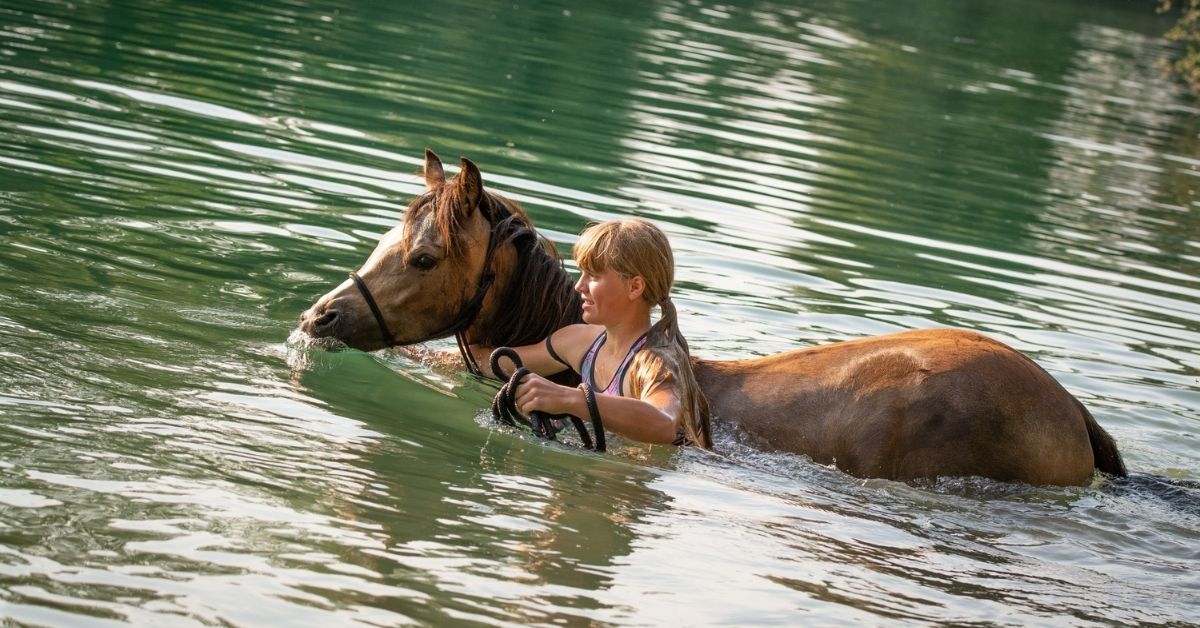
How Far Can a Horse See?
Horses have significant eyesight and can see for long distances. On average, a horse’s range of vision is approximately 300 degrees, much wider than a human’s 180-degree field of vision.
This level of vision allows horses to see up to 30 feet away. In addition, horses can see in color and have a better sense of night vision than humans.
Also, horses can see in low-light conditions and have excellent night vision. In fact, horses can see six times better than humans in low-light conditions and three times better in complete darkness.
Final Thoughts
There’s no doubt that horses are amazing creatures. Not only can they travel long distances, but they can also swim and jump to great heights.
It’s no wonder why horses have been used for transportation and travel for centuries. They’re pretty efficient when it comes to covering a lot of ground!
I hope this article answers your question and sheds some light on how far horses can travel in a day.
